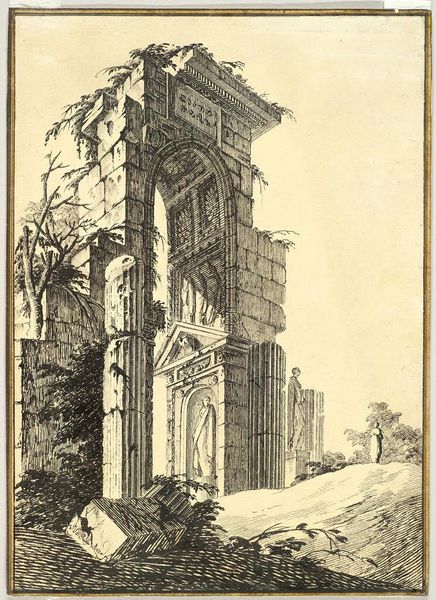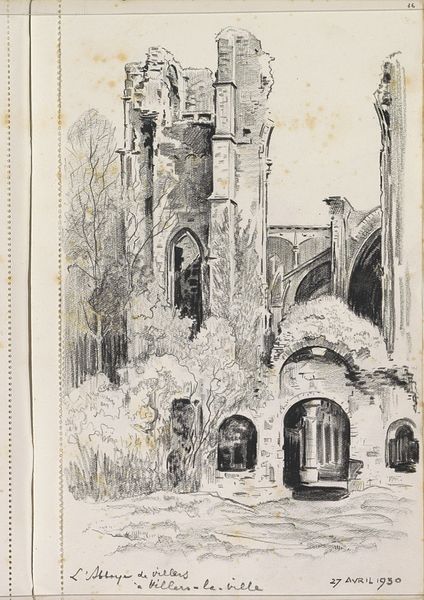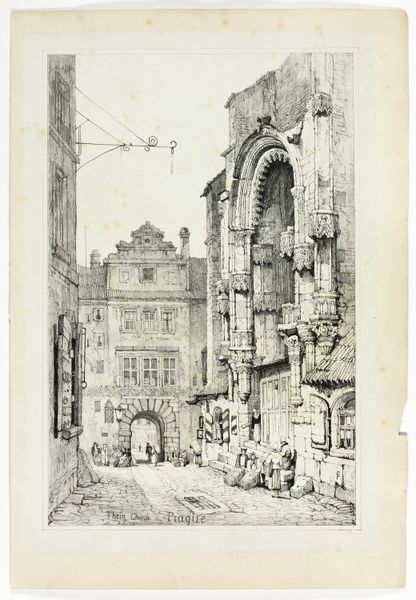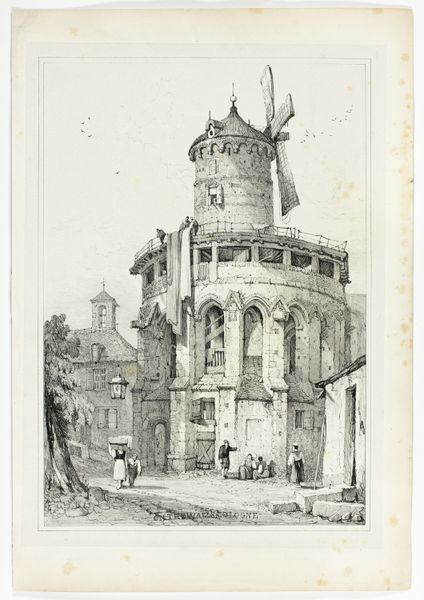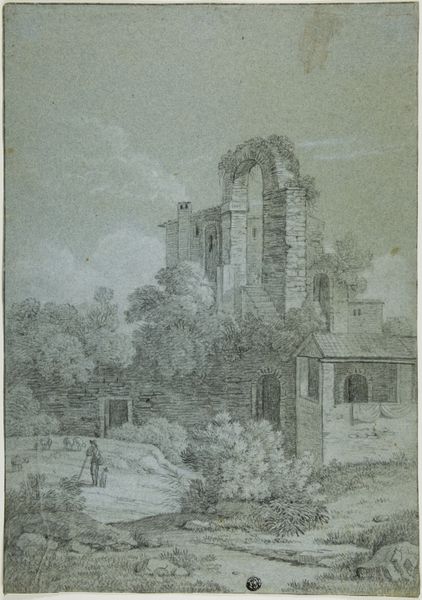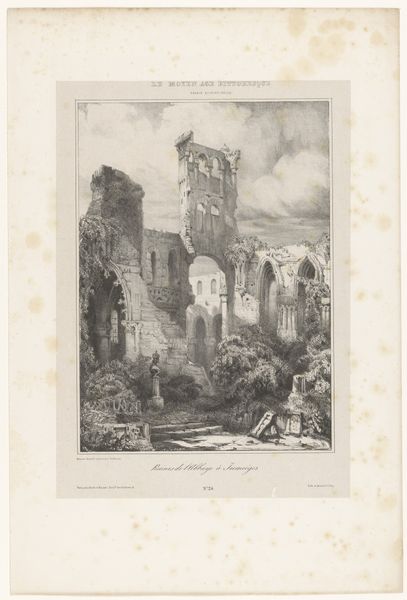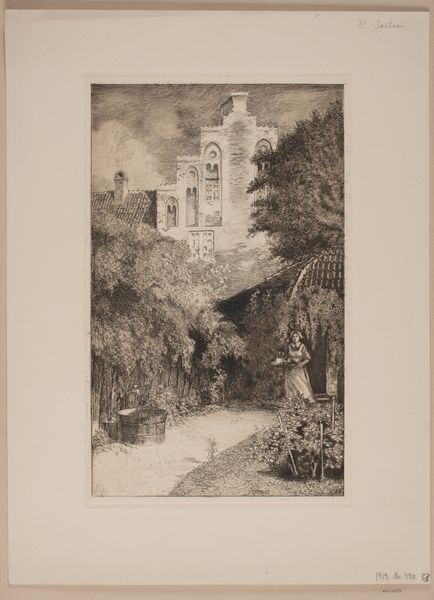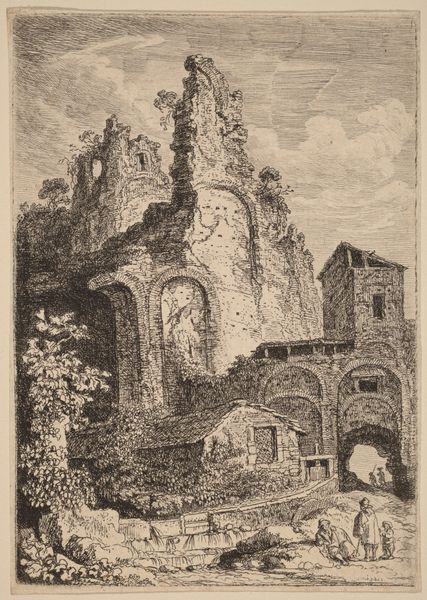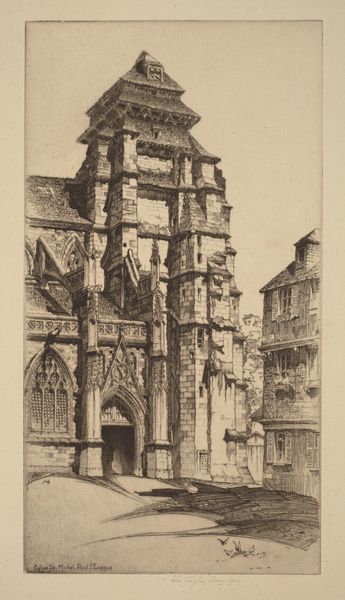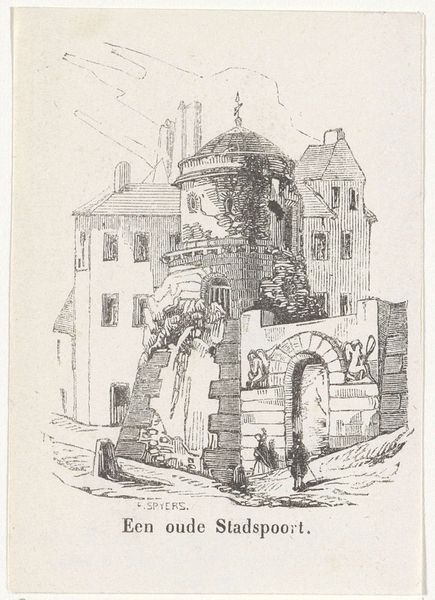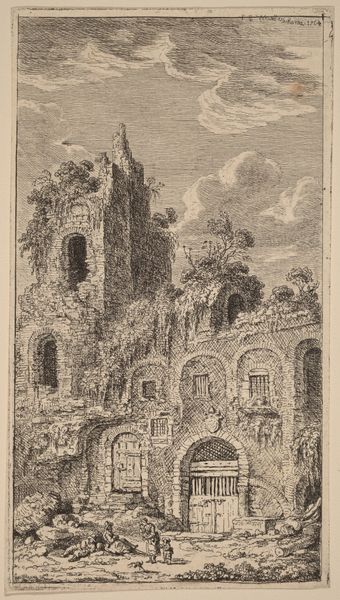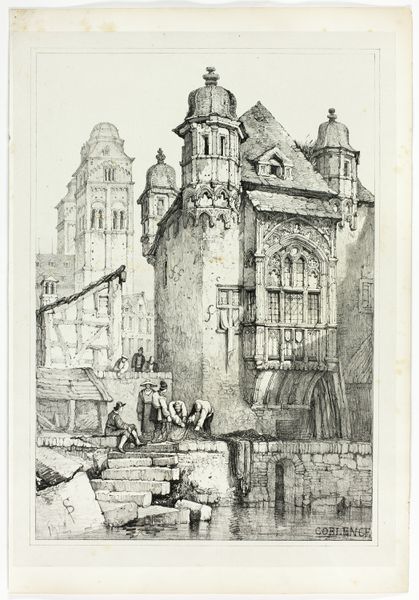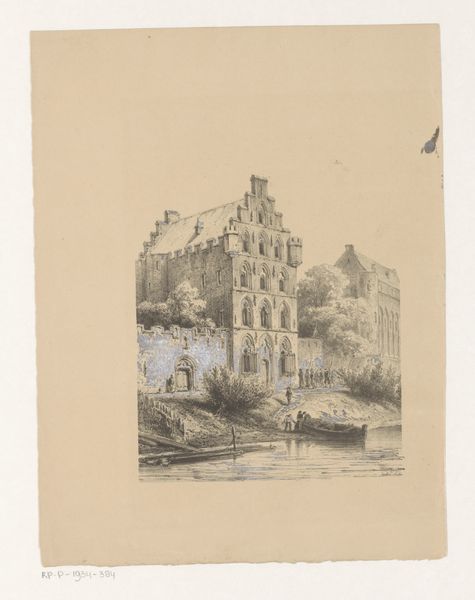
drawing, print, etching, paper, ink, graphite
#
drawing
#
ink drawing
# print
#
etching
#
landscape
#
paper
#
ink
#
romanticism
#
pen-ink sketch
#
graphite
#
cityscape
Dimensions: 474 × 332 mm
Copyright: Public Domain
Curator: Looking at "Heidelberg Castle," created by Samuel Prout around 1830, the romanticism is palpable. Executed with ink and graphite, it’s an etching, a print on paper, that immediately brings forth feelings of grandeur tempered with melancholic decay. What do you see? Editor: Initially, I see resilience etched into every line. The castle, despite its ruins, dominates the landscape. The way Prout renders light and shadow—there's a symbolic contrast between enduring structures and the figures below seemingly dwarfed by history. The figures by the entryway...their garb identifies them? Curator: Undoubtedly, their clothes are evocative, signaling a time deeply steeped in class stratification and gendered identities. I see a reinforcement of a patriarchal hierarchy. The very setting speaks to that hierarchy because feudal power struggles erected that fortress. What symbols jump out at you? Editor: The tower's decay really speaks. Think of the archetypal Tower card in Tarot—it's about sudden upheaval, revealing truths that have been hidden, challenging established orders. Here, it symbolizes, perhaps, the fading of aristocratic dominance as industrialization surged, displacing older regimes. Curator: Indeed, ruins often functioned as potent symbols in the Romantic era, underscoring the impermanence of power and earthly achievement, inviting viewers to contemplate social upheaval. Also, Prout seems deliberate, highlighting this historical weight as part of this cityscape—an examination, even, of changing dynamics within society itself. The symbolism surrounding nature also is important to look into! Editor: Good point. And Prout has populated that space with nature in an embracing—almost reclaiming—stance around this castle's ruin. We could analyze it through an ecocritical lens, where nature represents restorative potential challenging any status quo. Is the tower intentionally truncated—so we ponder the cyclical nature, death and rebirth that also might lead to some emotional and pschological distress and discomfort, too? Curator: Definitely a provocative consideration to suggest those possibilities. Through this single piece, Samuel Prout’s Heidelberg Castle provides fertile ground for discussions about history, symbolism, and our shifting societal landscape. Editor: Yes, its rich tapestry woven of lines, shapes, and subtle social-political visual symbols that speak volumes beyond a simple cityscape. It truly stays with you, making you ponder.
Comments
No comments
Be the first to comment and join the conversation on the ultimate creative platform.
